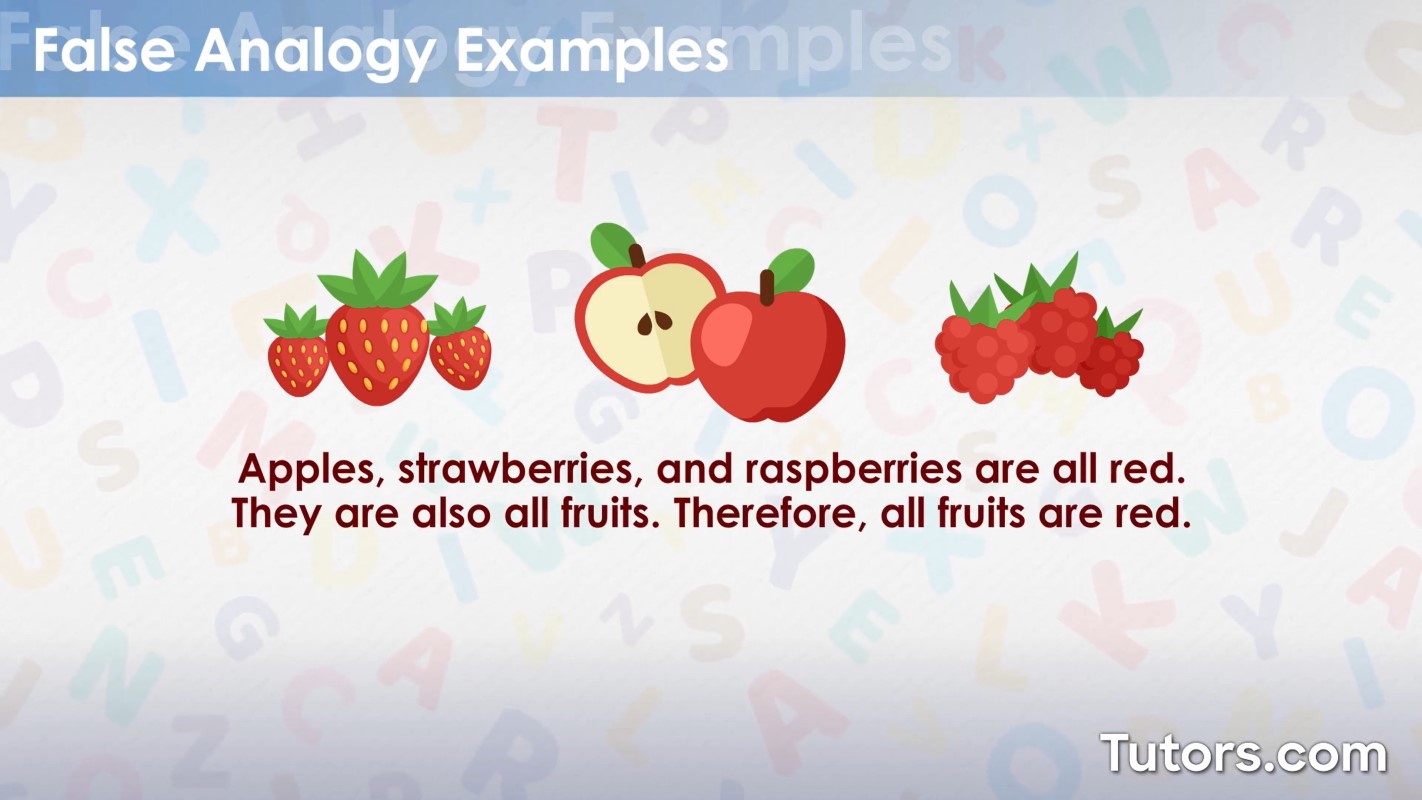False Analogy — Definition and Examples
False analogy fallacy
A false analogy is a type of logical fallacy where a weak analogy leads to an incorrect conclusion. While the items in the comparison are similar in some way, an additional similarity is incorrectly attributed to them. The characteristics of the two items ultimately differ in the area compared, creating a false conclusion.
Consider the following example of a false analogy:
| Similarity 1 | Zachary and Tyler are on the baseball team. |
| Similtarity 2 | Zachary and Tyler both have brothers. |
| Conclusion | Therefore, Zachary and Tyler are brothers. |
Despite the similarities Zachary and Tyler share, one cannot conclude that they are brothers based on the provided information. Therefore, it is a false analogy.

A false analogy can also be called “faulty analogy,” “weak analogy,” or “faulty comparison.” A false analogy is a type of informal fallacy that applies to inductive arguments.
False analogy examples
The fallacy of false analogies occurs when so much weight is placed on proven similarities that someone thinks other similarities must also apply. This faulty reasoning can often lead to absurd conclusions:
Banana Analogy: Bananas and telephones are both shaped to fit into human hands; therefore, bananas were created for humans alone.
Fruit Analogy: Apples, strawberries, and raspberries are all red. They are also all fruits. Therefore, all fruits are red.
Penguin Analogy: Penguins are black and white; some old TV shows are black and white. Therefore, some penguins are old TV shows.

While false analogies can contain an obvious error in logic, not all are as easy to spot:
While credit card companies can be opportunistic, vultures scavenge for survival, while banks do it for profit.
Since Neil Armstrong stepped foot on the moon, society has changed. Factors such as national and international relationships and the interest of private companies have changed the space program. Therefore, putting a person on the moon 50 years ago is not the same as putting a person on Mars today.
While music programs may help students perform better on standardized testing, simply identifying one component is an oversimplification.